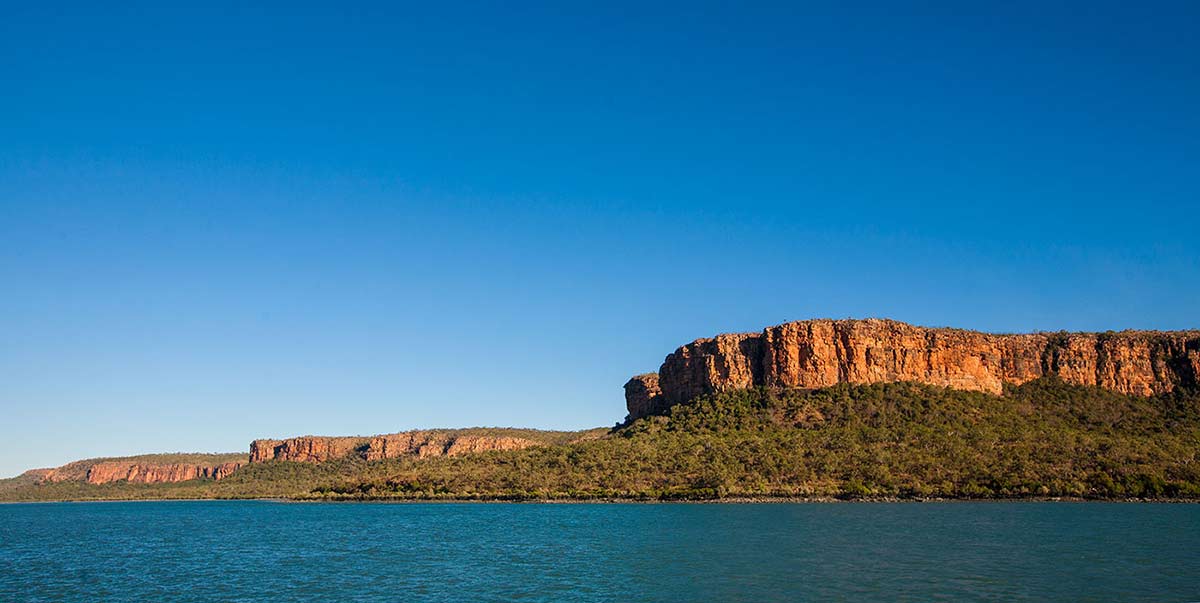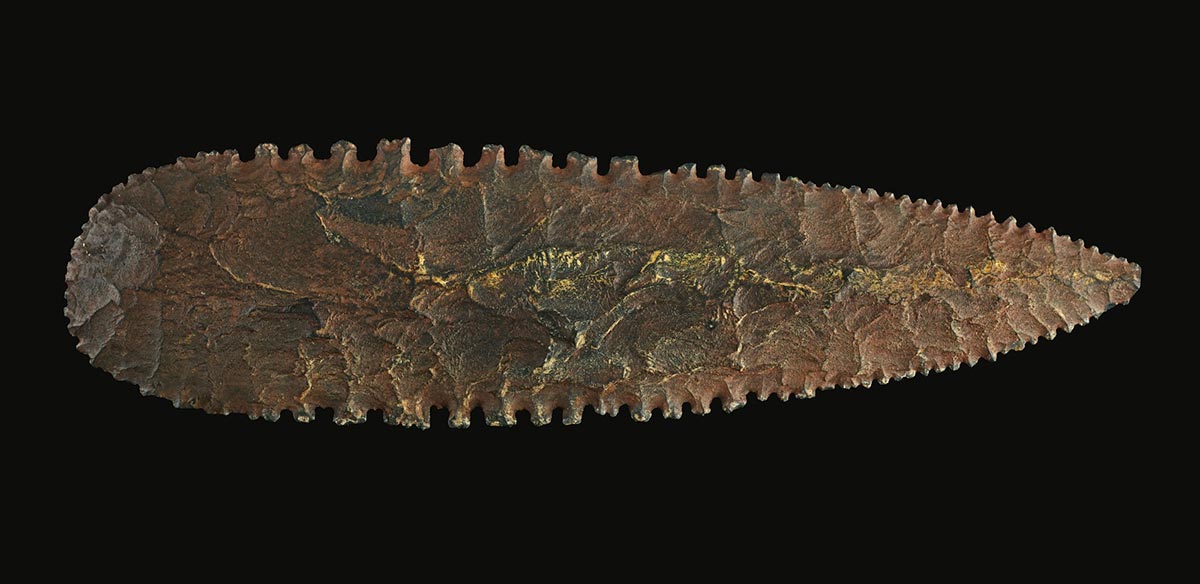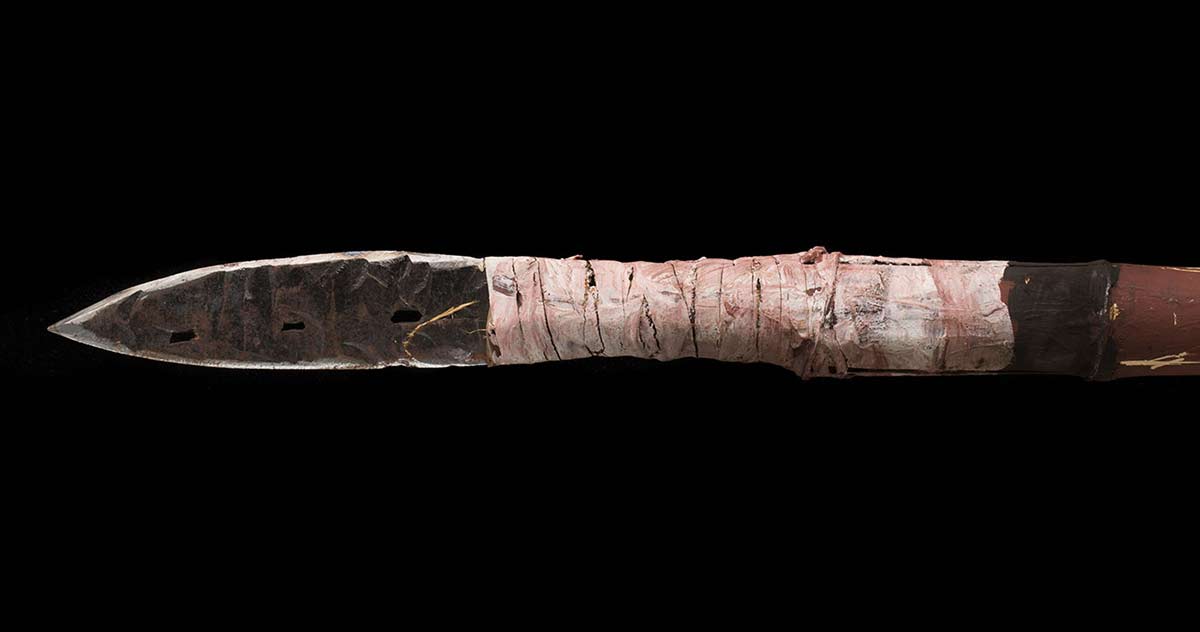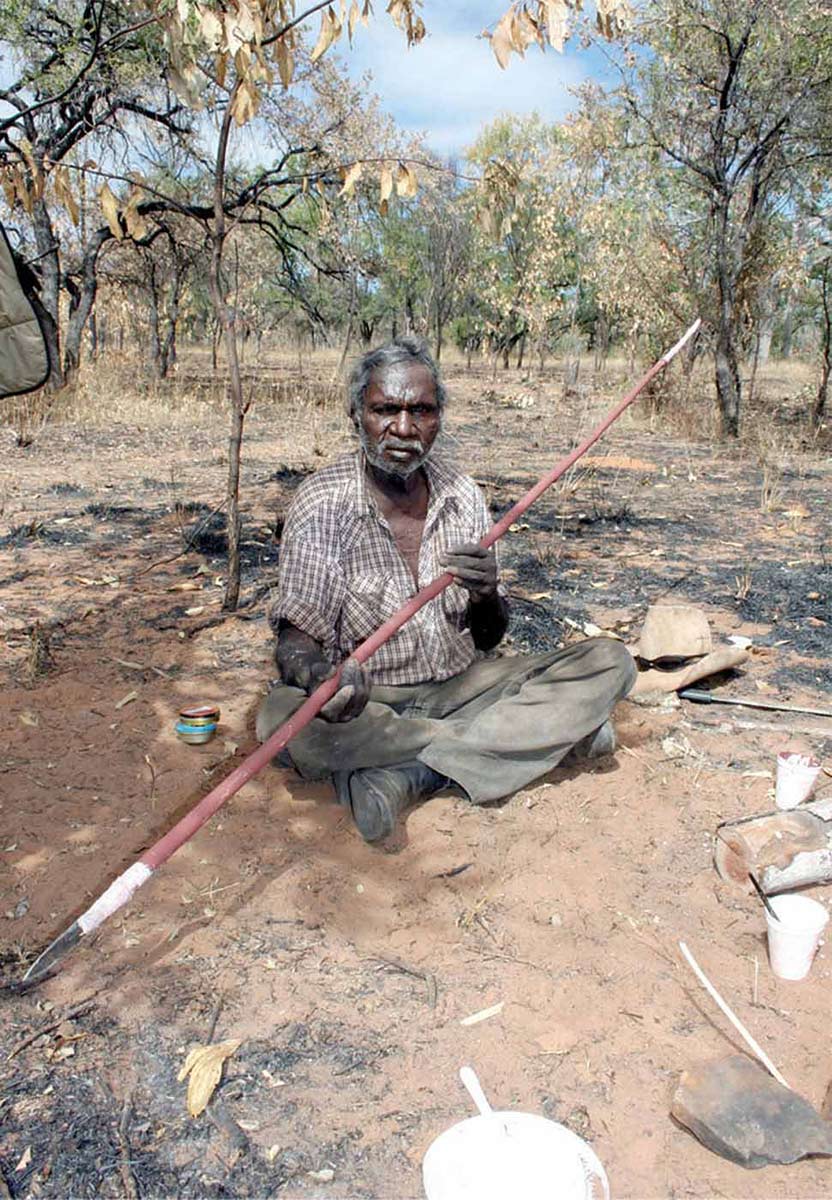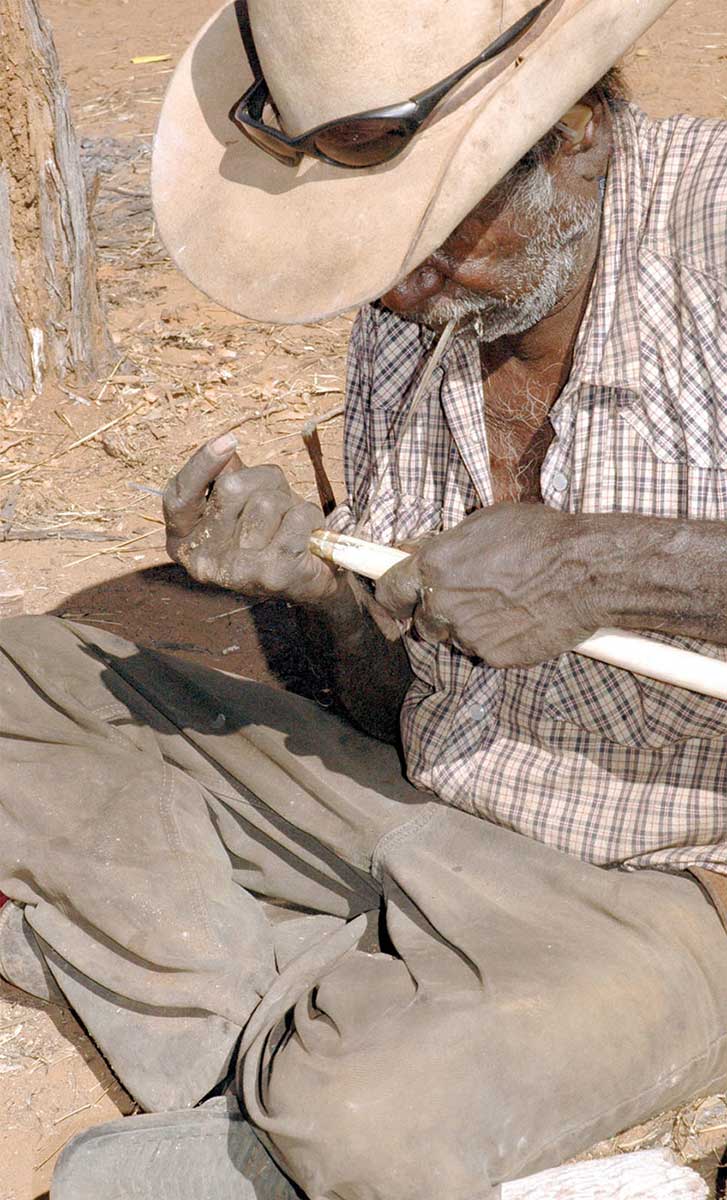Fragile diplomacy
Warren Barunga, Worrorra traditional owner, 2015:
Hanover Bay – beautiful, it’s magic country. High red bluffs, that peak ... especially when the sun gets up, when the sun rises you see the different colours. Just a magic place.
In 1821, Worrorra people looked out from the shores of Hanover Bay in north-west Australia to see HMS Bathurst sailing in. It was not the first visit by a foreign ship.
Warren Barunga, Worrorra traditional owner, 2015:
It was actually the Dutch who first came to our coast ... and we did a lot of dealing with the Macassans as well.
The meeting with the Bathurst’s crew began amicably.
Phillip Parker King, Narrative of a Survey of the Intertropical and Western Coasts of Australia, entry for 7 August 1821:
On our presenting them with some of the fish that we had caught ... they dropped their spears and immediately returned us something in exchange; one gave a belt ... and the other a club.
But soon after the exchange of goods, a British officer was speared in the back. The British retaliated by shooting a local man in the shoulder and then left. In the panic of the moment, it is likely that neither side understood why the encounter had unravelled.
The stone spearhead pictured opposite comes from that moment.
When the British returned to the region in the 1880s, it was to secure land for cattle. Through the making of a modern horseshoe spearhead (below), Kimberley man Nuggit Gooditt links this time-honoured craft to a more recent story.
Old objects
Phillip Parker King collected this spearhead from Hanover Bay in north-west Australia in August 1821.
Curious about how it was made, King noted in his journal: ‘Both edges were serrated in a most surprising way; the serratures were evidently made by a sharp stroke with some instrument, but it was effected without leaving the least mark of the blow’.
The spearhead subsequently became part of the United Services Institution’s collection in London.
In 1873 Augustus Franks presented it to the British Museum. At that time Franks was an active private collector as well as being the British Museum’s Keeper of British and Medieval Antiquities and Ethnography.
Sixty years after Phillip Parker King’s visit, pastoralists moved into Kimberley country, taking land but bringing with them new materials that Kimberley people turned into spearheads.
Nuggit Gooditt made this spear and spearhead in 2006 during a living heritage bush camp held at Jigeengardi (Wire Yard), on Gibb River station in the Kimberley.
Leah Umbagai and Mary Anne Jebb, Jingeengardi (Wire Yard) Bush Camp, Mowanjum Spirit of the Wandjina Aboriginal Corporation on behalf of Worrora, Ngarinyin and Wunambal peoples, 2008:
The reason we had the camp was to get out on country ... to share knowledge and culture ... Women and girls practised spinning, string-making and making bark cradles. Men and boys practised spear making, preparing kangaroo sinew, didgeridoos, spear throwers and gums. Everyone practised language words for plants trees and objects ... Nighttime was ... a time for storytelling.
PP King, 7 August 1821:
On landing we climbed the rocks on which the two men were standing … upon our approach they retired a few paces and evidently eyed us in a distrustful manner.
You may also like
